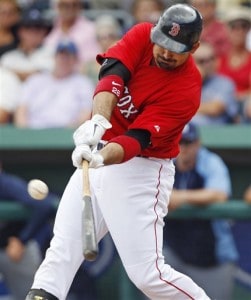Should Athletes Train Individual Muscles or Only Sports Movements?

Personal trainers have to know how to train people from all walks of life. I’ve seen bodybuilders, strength athletes, middle-aged men, obese housewives, trained athletes, newbies, weekend warriors, and about 100 other types of people and athletes. No one routine can be designed for everyone. Sport-specific movements might be prescribed for some athletes, while others might need a beginner’s routine, while others might only want to focus on powerlifting movements like bench, squats, and deads. We need to always be aware of the athlete’s goals when designing a workout routine.
Even in sport-specific niches like football, baseball, basketball, and soccer, or with other athletes such as powerlifters, bodybuilders, strongmen, and Olympic lifters, there is no one-size-fits-all training routine. You can’t take a baseball pitcher and train the pitching motion for 5 hours a day, 7 days a week. It just won’t work. So how do you train athletes who only need a small variety of movements to be successful at their sport?
The Myth
A long-standing myth about training for sports is that you should only train in the common movements for your sport so that you can get better at those movements. If you know nothing about physiology, kinesiology, or basic physics, then logically that makes sense.
However, if you think about how the body works, you will realize that the body will always find a way to perform any intended movement. Have you ever bench pressed and altered your shoulder, elbow, hip, knee, or foot position to eke out that last rep?
The Truth
Training a specific movement or motion is great for developing a neural pattern for that movement, but does it train your body to perform that movement under extreme exhaustion or stress? In an extreme case, your body may attempt to utilize muscles from other parts of your body that are not normally used to perform that movement. If those muscles are not also trained, they will fail and the athlete could be injured or worse.
This is the body’s instinct to adapt for survival. There is no instinct to throw a football 80 yards or run a sub-5-minute mile. Survival and reproduction are what we are programmed to do, so that is what we must train for. Survival states that if a movement can’t be performed under extreme stress, that the body will attempt to find a way to perform that movement. Therefore we must train all of our muscles to be strong, fast, and powerful in every movement, angle, and pattern possible.
Find and Train The Weakest Link
Weak point training is a vital component of any trained athlete’s workout routine. You must identify the weakest link in all of your major lifts, especially those that transfer to sport-specific moves, and fix the weakness. Once a weakness is fixed, find the next weakness. Trust me when I tell you that there is always the weakest link – some muscles will always give out before others.
To find the weakest link, look for the most active muscle during the slowest point in your range of motion, or the most active muscle at your common point of failure. For example, if you can’t push a bench press off your chest without help, but you can easily lock it out, then your chest is the weak point. If you can press the bar off your chest but you can’t lock it out without help, then your triceps are the weak point.
Similarly, strengthening your back and core can help you overcome a plateau in your overhead press. See how everything fits together now?
Any muscle or joint that is frequently injured or sore is probably NOT the weakest link. For example, you might injure your pec because your triceps are the weakest link. Fix that triceps imbalance and chances are your pecs will not be as susceptible to the same injury. If you’re dealing with recurring muscle or joint issues, consulting a chiropractor in Alpharetta, GA could help address these concerns and keep you on track with your training.
Final Thoughts
We must train the primary muscles in any action that is important to athletic performance, essentially sport-specific training for sport-specific athletes, but we also need to build a solid foundation and core. This means we should be using compound exercises as the basis for our training, and single-joint movements to train our weak points. Keep in mind that weak points can not always be overcome by increased or altered training. Sometimes you might need to recruit a doctor, chiropractor, massage therapist, strength coach, or physical therapist to help you determine the best way to fix your weak point.
This rule goes for bodybuilders too. You can’t just train the compound movements. Sometimes they need single-joint exercises to bring up the weakest points in their physique.
Once you improve the function of all of the most important muscles in your sport, you will surely improve your performance.
Read more: Fitness Forethought – 6 Tips For Preventing and Managing Sports Injuries
Tags: athlete, athletes, bodybuilding, exercise, fitness, Sports, train, training, weak point, Weight Training, weightlifting, workout